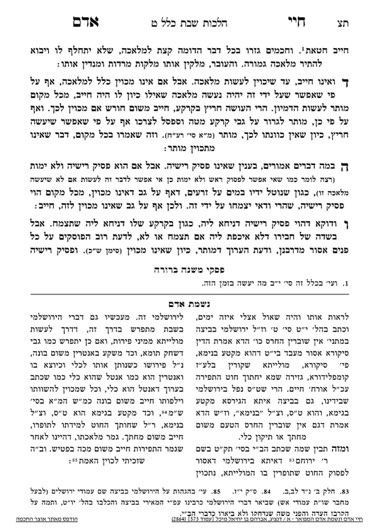We are continuing in siman 4. Yesterday, we learned an introduction to the concept of davar she’eino miskavein, and today we will begin the siman. The Chayei Adam writes that in order for one to be chayav in melacha deoraysa, one must have intention to perform the melacha. However, if one does not have intention to perform the melacha, even if the action being performed can cause melacha to take place and even if that melacha by itself would be assur if it would have been performed by itself, it is still muttar.
The Chayei Adam gives an example. He writes that if one wishes to dig a ditch in the ground, they are chayav under the melacha of choreish. Choreish is the preparation of the ground for planting, and a toldah is making a ditch or impression in the ground for any reason, even if not for planting. Alternatively, the melacha will sometimes be boneh but either way will be an issur deoraysa.
Nevertheless, even though when a person intentionally digs a ditch, it is a melacha deoraysa, one can pull a bench or bed along soft earth even though it may make a ditch. Since the goal is not the ditch but to move the bench or bed, it is muttar due to the concept of davar she’eino miskavein.
Although the opinion of Rav Shimon is that davar she’eino miskavein is muttar, Rav Yehuda disagrees. Nevertheless, we pasken in accordance with Rav Shimon,
It is important to note that davar she’eino miskavein is unique in that it changes the issur from assur to muttar (as opposed to assur but patur, meaning assur derabanan). It applies in this way not only to Shabbos but to all issurim.
We will discuss psik reisha in the next shiurim, be’ezras Hashem
Summary
- Davar she’eino miskavein is the general Torah concept of performing one action with an unintended aveirah which may occur in addition. We pasken in accordance with Rav Shimon, that it is muttar
- Davar she’eino miskavein does not only apply to Shabbos but to all issurim.



